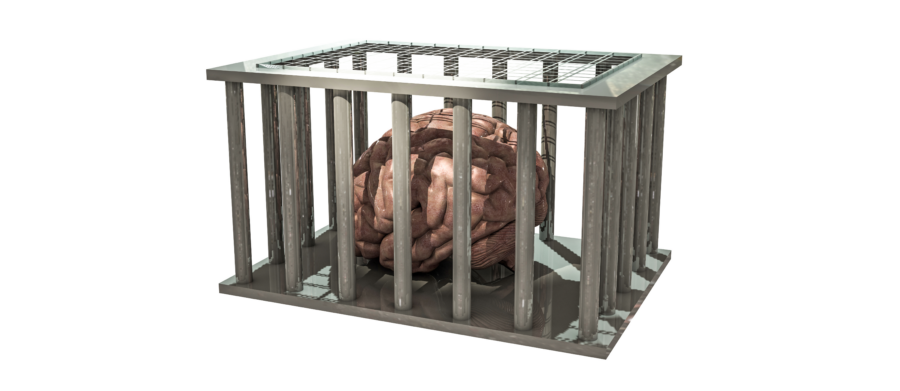
The integrity of the blood-brain barrier (BBB) is essential in protecting the brain [1] from toxins and pathogens, and maintaining correct functioning of the central nervous system (CNS). The BBB often prevents drugs circulating in the blood from entering the brain, which can present a challenge in the development of therapeutics to treat CNS conditions such as MS, where promising drug candidates may be unable to reach their intended target. Thus, drug delivery across the BBB has been described as one of the biggest challenges in modern medicine [2]. Projects such as SONGBIRD [3] have sought to create models of the BBB to assist in the drug development process, whilst other studies such as NEUROTARGET [4] have examined more closely how drugs pass through the BBB. Further research has also explored mechanisms underlying BBB integrity [1] and factors that might regulate BBB function and neuroinflammation [5]. In this edition of ECTRIMS Insights, we will take a closer look at the role of the BBB in individuals with MS and how the ability to modify the BBB may alter future treatment strategies.
The functioning of the BBB in individuals with MS
 Over the last 10 years, several studies have examined the role of the BBB in immune surveillance of the CNS [6], which, given the immune activation associated with MS, has resulted in theories around the potential role of the BBB in disease pathogenesis. A review published in 2022 [6] hypothesised that the BBB may be a contributor to the disruption of CNS homeostasis that occurs in neurological disorders such as MS, rather than a victim of the disease. Examining the wealth of published data, the authors noted that the breakdown of the BBB in a hereditarily susceptible population may serve to initiate the disease, with the subsequent presence of immunocytes in the brain parenchyma cited as a factor potentiating the disease. A double effect of the disruption of the BBB in MS pathogenesis [6] has also been postulated. Early in the disease course, it is thought that this disruption facilitates the immune attack on the CNS, with peripherally activated T-lymphocytes infiltrating the CNS and resulting in further immune activation and demyelination. Subsequently, the CNS exhibits self-sustained demyelination and neurodegenerative processes, whereby centrally activated T-cells return to the periphery to recruit additional proinflammatory lymphocytes. The mechanisms underlying BBB dysfunction are not fully understood, however, it would appear that intrinsic alterations in the BBB may contribute to MS pathogenesis [7], with the breakdown of the BBB an essential early step in the initiation of the autoimmune attack against the CNS that occurs in individuals with MS.
Over the last 10 years, several studies have examined the role of the BBB in immune surveillance of the CNS [6], which, given the immune activation associated with MS, has resulted in theories around the potential role of the BBB in disease pathogenesis. A review published in 2022 [6] hypothesised that the BBB may be a contributor to the disruption of CNS homeostasis that occurs in neurological disorders such as MS, rather than a victim of the disease. Examining the wealth of published data, the authors noted that the breakdown of the BBB in a hereditarily susceptible population may serve to initiate the disease, with the subsequent presence of immunocytes in the brain parenchyma cited as a factor potentiating the disease. A double effect of the disruption of the BBB in MS pathogenesis [6] has also been postulated. Early in the disease course, it is thought that this disruption facilitates the immune attack on the CNS, with peripherally activated T-lymphocytes infiltrating the CNS and resulting in further immune activation and demyelination. Subsequently, the CNS exhibits self-sustained demyelination and neurodegenerative processes, whereby centrally activated T-cells return to the periphery to recruit additional proinflammatory lymphocytes. The mechanisms underlying BBB dysfunction are not fully understood, however, it would appear that intrinsic alterations in the BBB may contribute to MS pathogenesis [7], with the breakdown of the BBB an essential early step in the initiation of the autoimmune attack against the CNS that occurs in individuals with MS.
Disease-modifying therapies and the BBB

Interest in the ability of disease-modifying therapies (DMTs) to penetrate the BBB and thus act in the central compartment has been growing in recent times. The aim of treatment with DMTs is to diminish the immunological attack on the CNS [8] and so prevent MS disease progression. However, many DMTs are unable to cross the BBB and exert direct actions within the CNS, leading researchers to postulate that their effects upon peripheral immune cells are in some way translated to modify processes occurring within the CNS. Typically, only small molecule drugs of low molecular weight, such as ozanimod and ibudilast [6], or those that are highly lipophilic are able to cross the BBB by either passive diffusion or carrier-mediated transporters. This has stimulated the development of small molecule, brain-penetrant DMTs, such as the Bruton’s tyrosine kinase (BTK) inhibitor tolebrutinib [9], which has been found to achieve cerebrospinal fluid concentrations predicted to modulate B-lymphocytes and microglial cells in individuals with MS.
Attempts have also been made to either elucidate mechanisms whereby the BBB can be made more permeable to DMTs, or to develop formulations of DMTs that are more able to cross the BBB. One such approach has been the development of lipid nanocarriers [10], the surface of which can be modified to enhance their uptake and penetration across the BBB. In addition, a study published in Nature Communications last year demonstrated that the endothelial uncoordinated 5 (Unc5B) receptor controls BBB integrity [1]. The use of antibodies to block the binding of the ligand Netrin-1 to Unc5B was shown to temporarily disrupt the BBB, raising the possibility of artificially regulating BBB integrity as a means of delivering DMTs directly to the CNS of individuals with MS.
Promoting continued advances in research
ECTRIMS welcomes the continued research into the role of the BBB in individuals with MS and applauds the efforts of the scientific community to constantly improve our understanding of how we might be able to target therapeutics to the CNS to halt disease progression and optimise patient care. We remain optimistic that ongoing research will continue to improve our knowledge of how best to treat individuals with all types of MS and provide a personalised approach to care.
***
ECTRIMS Insights articles are produced with an intent of being a neutral source of information sharing and objective analysis for the MS and neuroscience community. Unless otherwise stated, cited information in our articles does equivocate official endorsement from ECTRIMS.
***
REFERENCES
[1] Boyé K, et al. Nat Commun. 2022;13(1):1169.
[2] Zhang W, et al. Int J Nanomedicine. 2021;16:5003–5016.
[3] European Research Council. SOphisticated 3D cell culture scaffolds for Next Generation Barrier-on-chip In vitro moDels. Available at: https://cordis.europa.eu/project/id/757444. Accessed February 2023.
[4] European Commission. Treatment of traumatic brain injury using dye-loaded polymeric nanoparticles. Available at: https://cordis.europa.eu/project/id/794094. Accessed February 2023.
[5] Podjaski C, et al. Brain. 2015;138(Pt 6):1598–1612.
[6] Bierhansl L, et al. Nat Rev Drug Discov. 2022;21(8):578–600.
[7] Nishihara H, et al. Brain. 2022;145(12):4334–4348.
[8] Correale J, et al. Mult Scler Relat Disord. 2021;56:103264.
[9] Sanofi. Media Update: New two-year efficacy and safety data for tolebrutinib, Sanofi’s investigational, brain-penetrant and bioactive BTK inhibitor, to be presented at ECTRIMS 2022. Available at: https://www.sanofi.com/en/media-room/press-releases/2022/2022-10-26-11-00-00-2541624. Accessed February 2023.
[10] Teixeira MI, et al. Colloids Surf B Biointerfaces. 2023;221:112999.